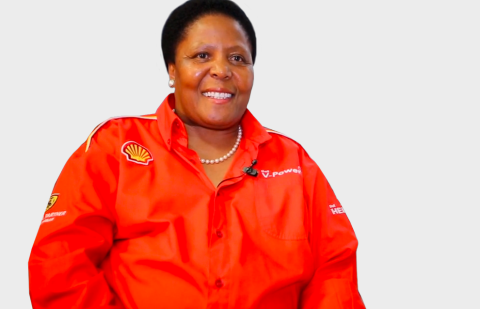African Leader
Is The Basic Income Grant Feasible?
Two decades after a seminal report on social security recommended that the government should implement a Basic Income Grant (BIG), there has been much debate around the issue, with economists trading intellectual blows in heated arguments about its feasibility.
In 2002, the Taylor Report stated: “The last vestiges of state racial discrimination have subsequently been removed, but a key underpinning principle of the old system remains in place – the assumption that those in the labour force can support themselves through work, and that unemployment is a temporary condition.
“In reality, those who cannot find work and who do not, or no longer, qualify for Unemployment Insurance Fund payments fall through a vast hole in the social safety net. Ideally, people should be able to earn a living through employment rather than rely on welfare payments. However, given the size of the unemployment problem and the extent of the growth challenge, full employment is not a feasible scenario in the short- to medium-term.”
In 2020, in the wake of the coronavirus-induced pandemic, countries decided to spend their way out of the crisis. World Bank economist Ugo Gentilini says 734 cash-based measures were implemented in 186 countries.
In South Africa, the government topped up social grant payments for six months until October 2020 and introduced a R350 a month social relief of distress (BIG) payment for almost 10 million people. The government has extended the grant until the end of March 2023. There has been a proliferation of reports, most of them from progressive think-tanks, that explain how a BIG can be implemented. Social justice activists say the grant must be a platform for the introduction of a BIG in April 2023. Never before has National Treasury been under such pressure.
South Africa has a progressive Constitution that includes socioeconomic rights to housing, food, water, education, social security, healthcare, a healthy environment, land, and redress for past discrimination, which can be judicially enforced. Excluding the right to basic education and children’s rights, which are immediately realisable, the Constitution says: “The state must take reasonable legislative and other measures, within its available resources, to achieve the progressive realisation of each of these rights.”
The Constitution also says: “Everyone has the right to … social security, including, if they are unable to support themselves and their dependents, appropriate social assistance.
The state must take reasonable legislative and other measures, within its available resources, to achieve the progressive realisation of each of these rights.”
Local security spend
In 1994, the first democratic government inherited a social security system that mostly provided social security for the elderly and the disabled and had about 2.9 million beneficiaries. The government spent 2.4 per cent of gross domestic product (GDP) on social security.
In April 1998, the government introduced a grant of R75 a month for children under eight years of age. Over the next 15 years until 2013, the government implemented a constitutional obligation to extend the grant to all children. During the 2019/2020 fiscal year, the government spent R175.2-billion (3.2 per cent of GDP) on social grants for 18 million beneficiaries. Therefore, there has been a small increase (0.8 of a percentage point as a share of GDP) shared between 15 million more beneficiaries.
The next priority is to provide income support to the working-age population. South Africa is now an unviable society with 12.5 million unemployed people. The crisis is so severe that GDP growth alone will not be enough.
There is a relationship between GDP growth and employment. An employment multiplier measures the percentage increase in employment that is associated with a one percentage point increase in GDP growth. Assuming an employment multiplier of 0.8 and a 2.5 per cent annual growth of the labour force, there will still be 11.7 million unemployed people by 2030. The unemployment rate will be 34.8 per cent (currently 46.6 per cent). With high rates of unemployment, it will still take decades to achieve full employment. We cannot ask the people to wait patiently and starve until we have reached full employment.
South Africa has three poverty lines – the food poverty line of R624 a month, the lower bound poverty line of R890 a month and the upper bound poverty line of R1 335 a month. Most studies evaluate the cost of implementing a BIG at these three objective measures of poverty. Providing a grant to 35.3 million people aged 18 to 59 would cost R264.3-billion at the food poverty line, R377-billion at the lower poverty line and R565.5-billion at the upper poverty line.
How should a BIG be funded?
Many of the progressive reports on how to finance a BIG provide a menu of taxes to pay for the grant. Some are fully funded or fiscally neutral. Others are partially funded. Orthodox economists use static accounting analysis to say that the grant is unaffordable. It would either result in a soaring debt ratio or large increases in taxes, which could have negative macroeconomic effects such as lower GDP growth. In some cases, the impression is created that all the tax increases will be implemented at the same. This is misleading because the taxes were provided as options for policymakers to make their selection.
However, an economy is dynamic and does not operate like a household or company budget or an income statement. The BIG will stimulate the economy since the recipients will not hide it under their mattresses. They will spend it in local economies in Soweto, Eldorado Park and Khayelitsha. The larger size of the economy will contain the public debt ratio and result in higher tax revenues than would have been collected without the grant. We must distinguish between gross and net costs and recognise that the take-up of the grant will be less than 100 per cent. Employed people above the tax threshold would not receive the grant, others would elect not to receive it for various reasons.
After three years, the uptake of the child support grant was only 25 per cent. Therefore, about two-thirds of the outlay would eventually go back to government, taking into account VAT receipts, a clawback from seven million taxpayers and higher tax revenues due to the stimulus effect. The BIG has a self-financing element.
A research report by the Studies in Poverty and Inequality Institute considered two options from eight scenarios. Providing an unfunded BIG for adults (18–59) would cost an additional R216-billion over the proposed three-year phased implementation period – R624 in year one, R890 in year two and R1 335 in year three – assuming a 60 per cent uptake and a clawback. But it would provide an inadequate direct stimulus of only 1.1 per cent of GDP over three years. Therefore, the report proposed that the grant should also be extended to children who currently receive a child support grant (CSG) of R460 a month. Like the BIG for adults, the CSG would also increase to R1 335 over three years.
This would provide a stimulus to the economy of R360-billion. The report says: “This sounds like a lot of money. But in economic terms, it would be only 1.8 per cent of an estimated GDP of more than R20-trillion during the three-year implementation period. If a household discovered that it would only cost 1.8 per cent of its income to eliminate black tax, it would pay the money without batting an eyelid.” There would be an annual GDP growth rate of 4.5 per cent during the three years. The debt to GDP ratio would increase to 77 per cent after three years, the same as it would be without the BIG.
The conclusion is that the grant can only be sustainable in the long term within the context of a new macroeconomic policy framework that has a six per cent GDP target that is binding on the Reserve Bank and National Treasury.






 Sign-up and receive the Business Media MAGS newsletter OR SA Mining newsletter straight to your inbox.
Sign-up and receive the Business Media MAGS newsletter OR SA Mining newsletter straight to your inbox.